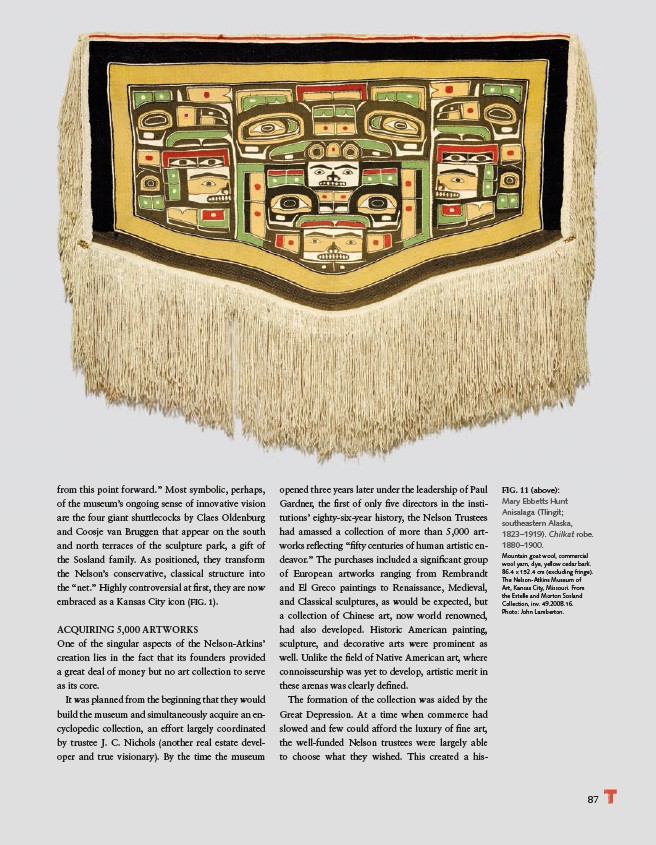
87
opened three years later under the leadership of Paul
Gardner, the first of only five directors in the institutions’
eighty-six-year history, the Nelson Trustees
had amassed a collection of more than 5,000 artworks
reflecting “fifty centuries of human artistic endeavor.”
The purchases included a significant group
of European artworks ranging from Rembrandt
and El Greco paintings to Renaissance, Medieval,
and Classical sculptures, as would be expected, but
a collection of Chinese art, now world renowned,
had also developed. Historic American painting,
sculpture, and decorative arts were prominent as
well. Unlike the field of Native American art, where
connoisseurship was yet to develop, artistic merit in
these arenas was clearly defined.
The formation of the collection was aided by the
Great Depression. At a time when commerce had
slowed and few could afford the luxury of fine art,
the well-funded Nelson trustees were largely able
to choose what they wished. This created a hisfrom
this point forward.” Most symbolic, perhaps,
of the museum’s ongoing sense of innovative vision
are the four giant shuttlecocks by Claes Oldenburg
and Coosje van Bruggen that appear on the south
and north terraces of the sculpture park, a gift of
the Sosland family. As positioned, they transform
the Nelson’s conservative, classical structure into
the “net.” Highly controversial at first, they are now
embraced as a Kansas City icon (FIG. 1).
ACQUIRING 5,000 ARTWORKS
One of the singular aspects of the Nelson-Atkins’
creation lies in the fact that its founders provided
a great deal of money but no art collection to serve
as its core.
It was planned from the beginning that they would
build the museum and simultaneously acquire an encyclopedic
collection, an effort largely coordinated
by trustee J. C. Nichols (another real estate developer
and true visionary). By the time the museum
FIG. 11 (above):
Mary Ebbetts Hunt
Anisalaga (Tlingit;
southeastern Alaska,
1823–1919). Chilkat robe.
1880–1900.
Mountain goat wool, commercial
wool yarn, dye, yellow cedar bark.
86.4 x 152.4 cm (excluding fringe).
The Nelson-Atkins Museum of
Art, Kansas City, Missouri. From
the Estelle and Morton Sosland
Collection, inv. 49.2008.16.
Photo: John Lamberton.